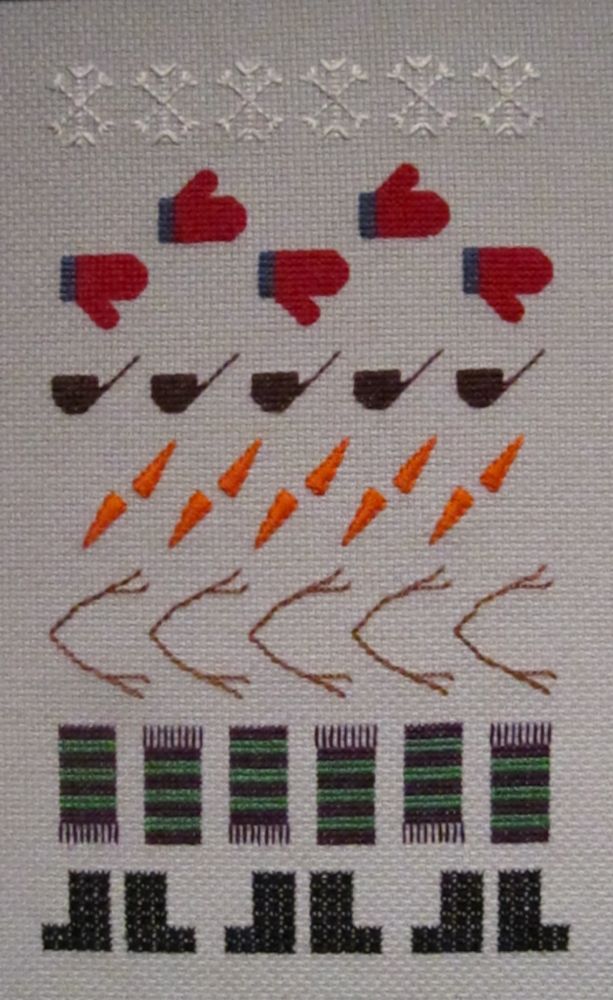These one-hour talks are on topics for needle artists. A small project is available with each talk.
Color!
Did you ever look at a project in a needlework magazine, and say “meh”, but later see it in a different color way and say “WOW!”? Confidence in the use of color is something that can transform how you approach your needlework. Diane Herrmann hopes to give you an overview of some color theory that will help you better understand how your perception of color has an impact on your reactions to stitched (or painted) pieces. We will begin with basic vocabulary and learn how to use a few simple color tools so that you’ll be more confident about choosing threads and fabrics for your needlework projects. If you have a color wheel at home or in a stitch bag, bring it along for the program!
Maya Textiles
Maya Textiles Brightly colored, dramatic wearable art, the indigenous clothing of Mexico and Guatemala displays embroidery and weaving skill that encompass historical symbolism, consummate expertise, and artistic beauty. The ancient techniques of construction and embellishment continue today with modern materials. Still, the textiles contain the designs and patterns that have held meaning in the culture for centuries.
The tradition of beautifully woven and embroidered Guatemalan fabrics and their connection to Maya culture intrigues me, especially because our local community has welcomed Guatemalan refugees for a few years. In this presentation we will follow the journey of one small village to bring back textile traditions to their young people and experience a visit to two rural indigenous communities where women are weaving for a Fair-Trade organization.

Weaving Hope: The Journey from Inspiration to Completed Needleart


WOW! That would make an amazing needlework piece! How many times have you said that as you looked at something in nature, or in a museum, or even in a jewelry or fabric shop?
When I visited Guatemala in 2020 to lead an embroidery workshop for indigenous Maya women, the shop owner of the Fair-Trade organization Yabal connected me to the weavers who worked for her. The entry wall of her shop in Xela, Guatemala had a striking painting of a weaver juxtaposed with square
blocks covered in samples of woven textiles. The name Yabal comes from a K’iche word that means “hope”; what I saw in the painted image was “Weaving Hope”. I knew that I wanted to adapt the painting as a needleart design, and eventually submit it to the National Academy of Needlearts (NAN) as part of Master Teacher certification.
The competed piece, “Weaving Hope: Kem Iye’bal” is an adaptation of that wall design. The components include a canvaswork sampler as well as an attached figure in stumpwork techniques.The design incorporates several stitches from earlier pieces designedfor the NAN Teacher Certification Program. This presentation will address the design process,including collaboration with fellow designers, particular challenges working with a variety of materials, and decisions about whether and how to make this into a teaching piece.


Seven Symmetries

Imagine all the designs ever created by all the artisans, from every culture in the world, in all of human history. It’s staggering to think of the variety of patterns available to these creative minds. Now, narrow your focus to consider just those patterns artists might use to make borders: long repeating designs on wallpaper borders, or skirt hems, or samplers, or lengths of lace, or tiles, or rugs. It’s still hard to imagine all the designs there are, or have ever been.
And yet, if you narrow your focus just one level further, to the single design element of symmetry, an amazing fact emerges. If you consider border patterns and the mathematical symmetries they allow, there are only seven distinct patterns available to use! How can this be, and how might we as designers or artists use the knowledge of these patterns to enhance our creative capacity? Mathematics has the answer to why there are only seven types.
The talk requires no previous knowledge of stitching, and the elementary geometry explanations are accessible to high school students.
The included project is a sampler to remind you of the different kinds of symmetry motions of one-dimensional patterns.



